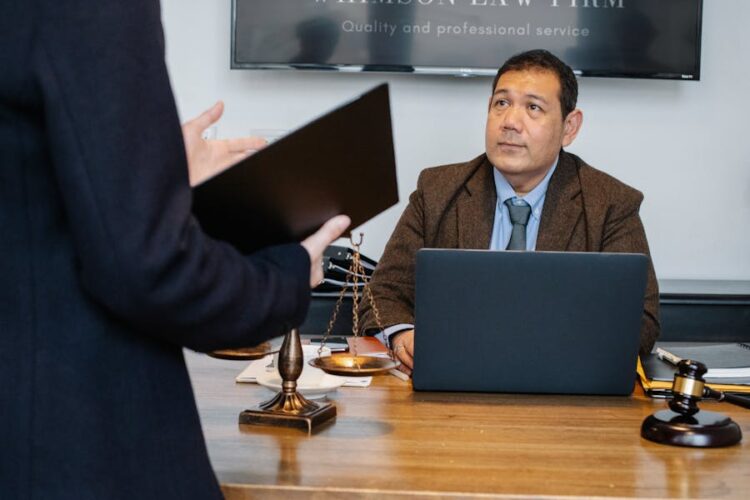When you hear about someone slipping and falling in a store, you might assume the store is automatically at fault. However, in legal cases, things can get complicated. Let’s take a closer look at a real-life example involving a woman named Judith and her lawsuit against Target.
On August 9, 2011, Judith went to a Target store in Bay Shore, New York, with her two grandchildren. While walking down an aisle, she suddenly slipped and fell. After the fall, Judith realized she had slipped on a clear liquid that she hadn’t seen before her accident. She didn’t know how the liquid got there or how long it had been on the floor.
The Lawsuit
Judith decided to sue Target for negligence, which means she believed Target failed to keep the store safe. She argued that Target either created the dangerous condition (the spill) or should have known about it and cleaned it up.
For Target to be found negligent, Judith needed to prove that:
- Target caused the spill or
- Target knew about the spill and did nothing or
- The spill was there long enough that Target should have known and cleaned it up.
The Evidence
Video Footage
There was video surveillance from the store that showed the aisle where Judith fell. The video revealed that Judith slipped about twelve minutes after a Target employee named Travis walked by the area. Travis didn’t see any spill when he walked by, and several other customers walked through the same aisle without any issues.
Employee Testimony
Travis, the Target employee, stated in an affidavit (a written statement) that he had inspected the area for hazards, including spills, and didn’t see anything. He also mentioned that the liquid looked fresh and clean when he returned after Judith’s fall. There were no footprints or cart marks in the liquid, suggesting it hadn’t been there long.
The Court’s Decision
The court granted summary judgment in favor of Target. This means the judge decided the case without a full trial because there weren’t enough facts in dispute to justify one. Here’s why:
- No Evidence of Creation: Judith couldn’t prove that Target or its employees caused the spill.
- No Actual Knowledge: There was no evidence that Target knew about the spill before Judith fell.
- No Constructive Knowledge: The spill wasn’t visible long enough for Target to reasonably discover and clean it. The video showed Travis walking by the area just twelve minutes before Judith fell, and he didn’t see any spill.
Judith’s lawyer argued that they needed more information from Target’s employee handbook to prove the case. However, the judge decided that even if the handbook had more details about safety procedures, it wouldn’t change the facts. The clear liquid wasn’t there long enough for Target to be expected to find and clean it up.
What This Means for Shoppers
This case is a good reminder for all of us as shoppers. While stores have a responsibility to keep their premises safe, there are also practical limits to what they can do. Here are a few important takeaways:
Be Aware of Your Surroundings
Always pay attention to where you are walking. Clear liquids, like the one Judith slipped on, can be especially hard to see. Being mindful of your surroundings can help you avoid accidents.
Report Hazards Immediately
If you see a spill or any other hazardous condition in a store, report it to an employee right away. This helps the store address the issue quickly and can prevent accidents for other shoppers.
Understand Legal Limits
Even if you are injured in a store, it doesn’t automatically mean the store is legally responsible. For a successful lawsuit, you need to prove that the store was negligent. This means showing that the store either caused the hazard, knew about it and did nothing, or should have known about it because it was there for a long time.
Document Everything
If you do have an accident, document everything as soon as possible. Take photos of the scene, get contact information for any witnesses, and report the incident to the store management. This information can be crucial if you decide to pursue legal action.
Know When to Seek Legal Advice
If you are injured and believe the store is at fault, it’s a good idea to consult with a lawyer who specializes in personal injury cases. They can help you understand whether you have a strong case and what evidence you will need to prove it.
The Role of Evidence
Judith’s case shows how critical evidence is in these situations. Video footage, witness statements, and physical evidence like the condition of the spill all play a significant role in determining the outcome of a case.
By keeping these points in mind, you can better navigate situations involving potential hazards in stores and understand what is required to hold a store accountable for injuries.
Seeking Legal Help
If you find yourself injured in a store like Target and believe the store is at fault, it’s crucial to seek legal advice. Consulting with a Target injury attorney can help you understand your rights and the strength of your case.
An experienced attorney can guide you through the legal process, help gather necessary evidence, and work towards getting you the compensation you deserve. Don’t hesitate to reach out for professional assistance to ensure your case is handled properly.
Conclusion
Judith’s case against Target was dismissed because she couldn’t prove that Target was negligent. This case highlights how important evidence is in legal matters. Just because an accident happens doesn’t automatically mean someone else is legally responsible. The court needs clear proof to hold a store like Target accountable for a slip and fall.
Understanding these details can help you see why not all accidents lead to successful lawsuits. If you ever find yourself in a similar situation, knowing what kind of evidence is needed can be crucial.










